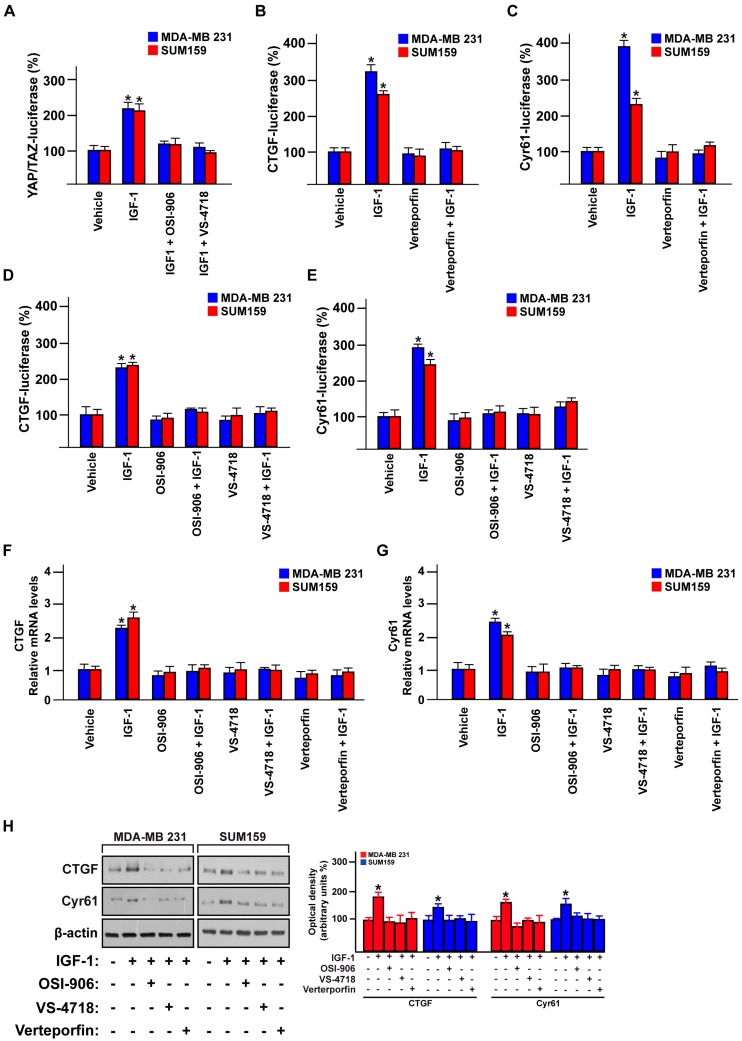Figure 6.
FAK mediates the IGF-1-induced regulation of the YAP target genes CTGF and Cyr61. (A) YAP/TAZ luciferase reporter assay in MDA-MB 231 and SUM159 cells treated with IGF-1 (50 ng/mL) alone or in combination with the IGF-1R inhibitor OSI-906 (1 µM) or the FAK inhibitor VS-4718 (100 nM). CTGF (B) and Cyr61 (C) luciferase reporter assays in MDA-MB 231 and SUM159 cells treated with IGF-1 (50 ng/mL) alone or in combination with the YAP/TEAD complex suppressor Verteporfin (100 nM). CTGF (D) and Cyr61 (E) luciferase reporter assays in MDA-MB 231 and SUM159 cells treated with IGF-1 (50 ng/mL) alone and in combination with the IGF-1R inhibitor OSI-906 (1 µM) or the FAK inhibitor VS-4718 (100 nM). mRNA expression of CTGF (F) and Cyr61 (G) in MDA-MB 231 and SUM159 cells treated with IGF-1 (50 ng/mL) alone and in combination with the IGF-1R inhibitor OSI-906 (1 µM), the FAK inhibitor VS-4718 (100 nM) or the YAP/TEAD complex suppressor Verteporfin (100 nM). (H) Immunoblots showing the CTGF and Cyr61 protein levels in MDA-MB 231 and SUM159 cells treated with IGF-1 (50 ng/mL) alone and in combination with the IGF-1R inhibitor OSI-906 (1 µM), the FAK inhibitor VS-4718 (100 nM) or the YAP/TEAD complex suppressor Verteporfin (100 nM). Side panels show densitometric analysis of the immunoblots normalized to the β-actin, which was used as loading control. Data shown are representative of three independent experiments performed in triplicate. Error bars represent mean ± SD. * indicates p < 0.05 for cells treated with vehicle versus treatments.

